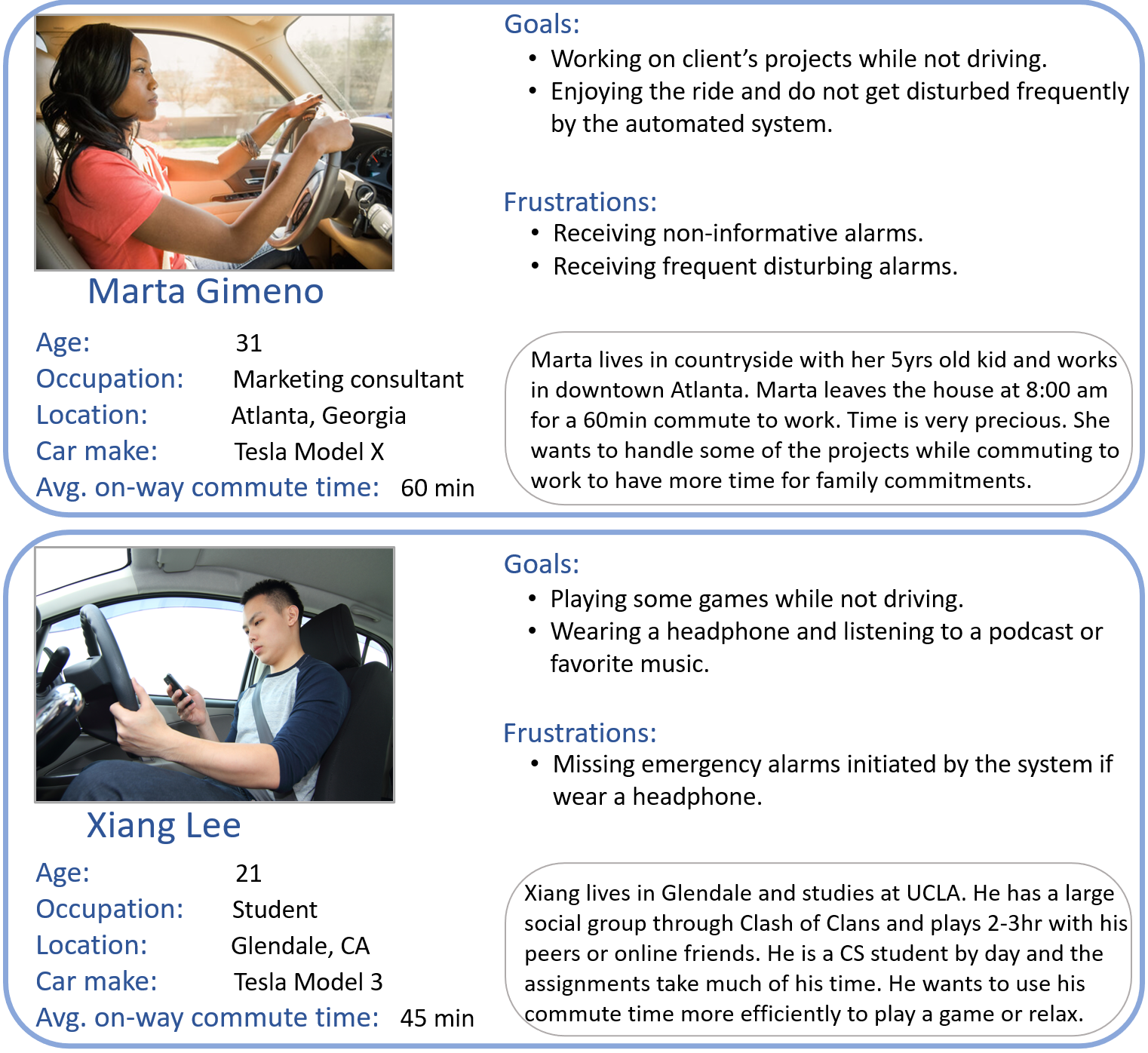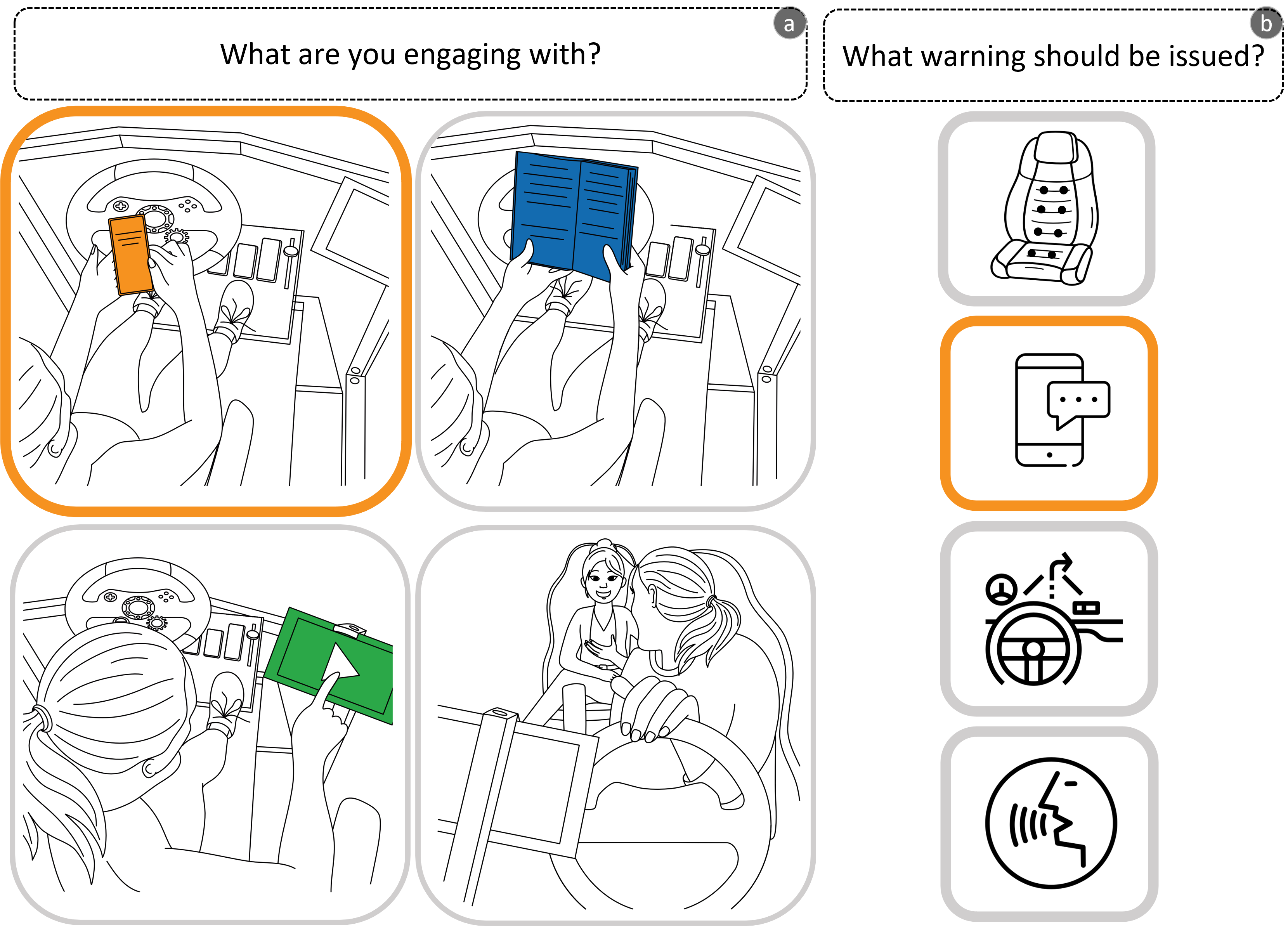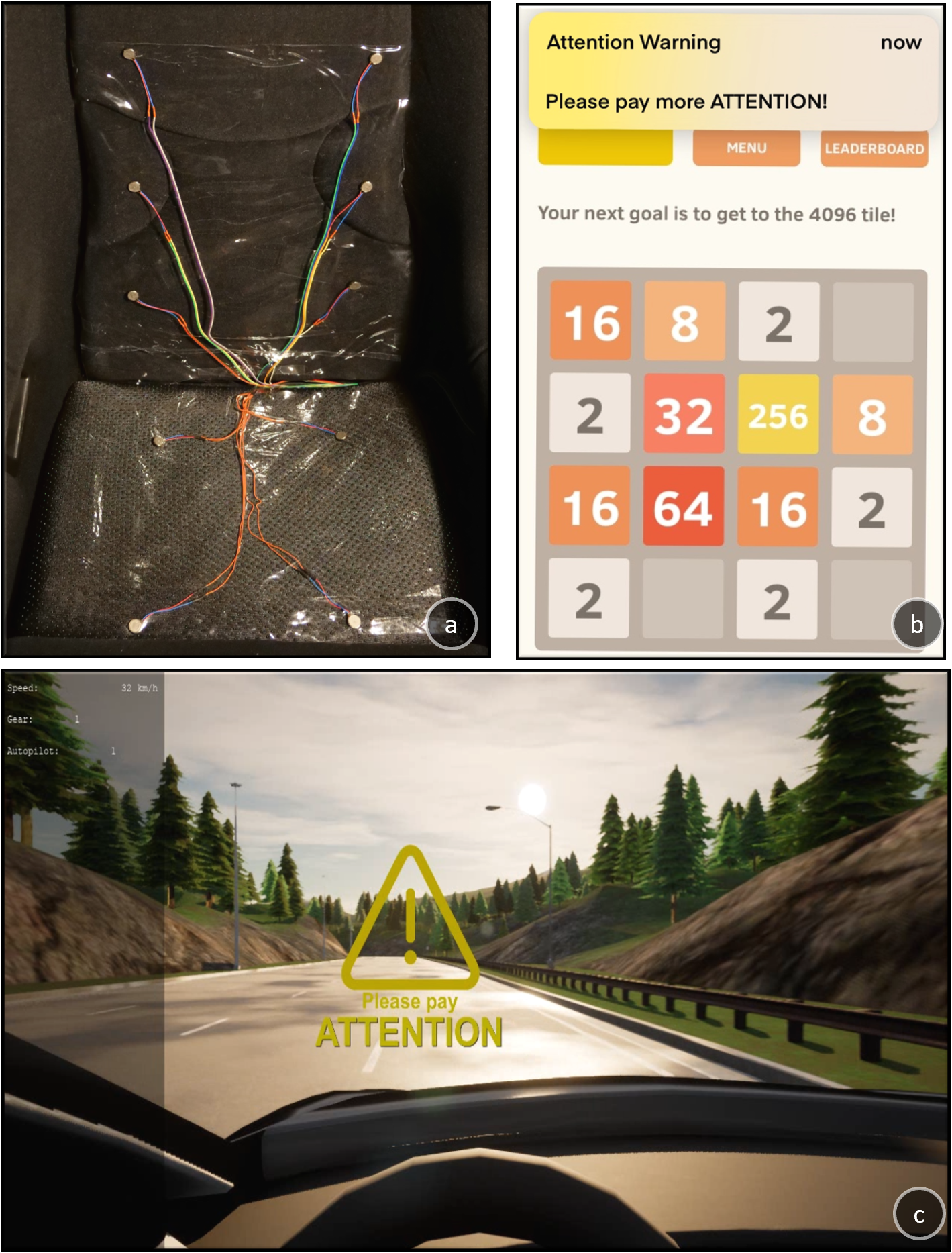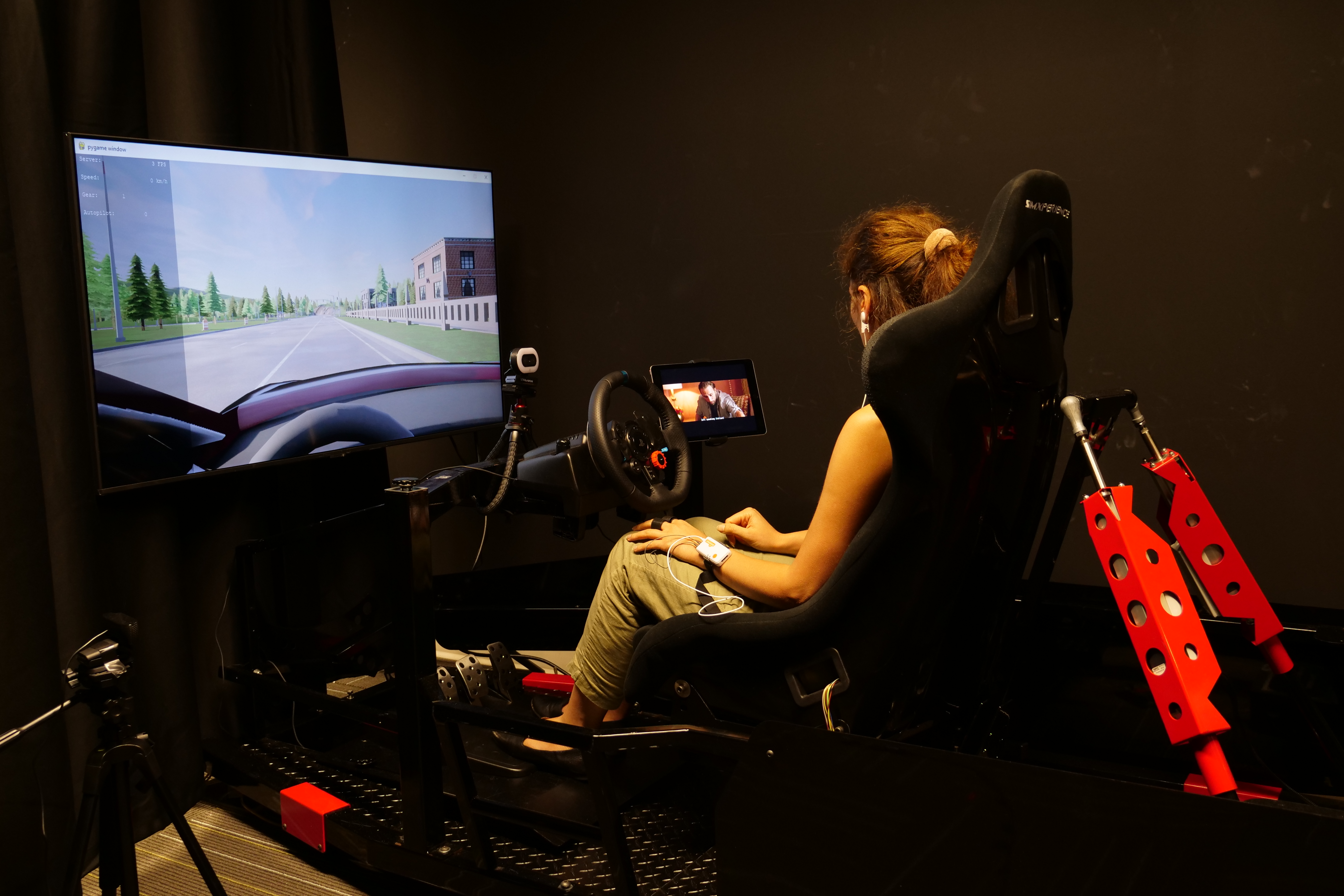OVERVIEW
Challange: Automated vehicles (Level 2 & 3 of autonomy) promise a future where drivers can engage in non-driving activities for a prolonged period. Nevertheless, automated vehicles may still need to occasionally hand the control back to drivers due to technology limitations and legal requirements. Drivers decoupled from driving while immersed in non-driving-related tasks could potentially either miss the system-initiated takeover request or a sudden alarm may startle them. Here, we'd like to propose a new approach to potentially solve the problem.
Solution: In order to potentially solve this issue and prevent catastrophic consequences of automated vehicles failures, we designed a novel context-aware advisory warning system to gently inform drivers about the loss of situation awareness. The system delivers advisory warnings appropriate to the type of user's immersed task and situation. The designed system is a desirable advisory warning system for making sure drivers stay vigilant in case of emergencies, despite of not being the primary controller of the system.
Approach: I employed the Design Thinking Methodology to design and implement a context-aware advisory warning system for automated vehicles:

I. EMPATHIZE
Extensive research have been conducted by HCI researchers in an attempt to reveal and further explore all plausible modalities for takeover request. Thus, I conducted secondary research as it’s a great and inexpensive way to familiarize with the history of different design solutions.
The review indicates three main modalities have been utilized either unimodally or multimodally including:
- Visual
- Auditory
- Haptic
d. Text Message
for advirosry warnings.

II. DEFINE
By unpacking the findings and collected data from the Empathize step, the next step is looking for the important needs of drivers in L2&3 of autonomy. For understanding the end users of the contex-aware system, I took the following steps:
- Personas: defined who the potential end users of contex-aware system would be. We came up with 2 primary personas guiding us to make design decisions meeting their needs.
- Problem Statement: defined a concise description of the problem that needs to be solved for the automated vehicle drivers
Problem Statement from a persona's pov:
"I am a tech-savy driver driving an automated vehicle trying to to engage in non-driving activities while driving in the best way possible, but I don’t know if I’m going to miss any important alert which needs my attention. Because I’m always immersed and fully focused in the task I do and don’t have anyone to talk to about it, which makes me feel isolated and alone"

III. IDEATION
After defining the meaningful and workable problem statement to address and the end-user's potential requirements, I started brainstorming to generate ideas to solve the defined problem.
In the ideas list, I wrote down anything that came to mind to get ideas flowing. Besides, I executed a storyboarding on the a persona's experience of using context-aware warning. Storyboarding enables me to bring situations to life and outline the impact of the solution.

IV. PROTOTYPE
I created high-fidelity prototypes for a) Vibrotactile, b) Text Message, and c) Visual contex-aware advisory warnings.
- Vibrotactile: We used 10 eccentric rotating mass (ERM) vibrotactile actuators (Tatoko 10 mm x 3 mm vibration motor, 3V, 12000 rpm). The vibrotactile actuators were configured into 3 × 2 on the driver seatback and 2 × 2 on the bottom of driver seat. They were placed 4.5-inch vertically, 8.7-inch horizontally apart from each other on the seatback, and 7.1-inch, 8.2-inch vertically and horizontally apart, respectively.
- Text Message: We designed an API that communicate with an application on the cellphone. This API includes the "Please pay more ATTENTION!" text message which is sent to the registered application. In order to do so, we use Onesignal (configures APNS certificates) and Kivy-ios to send the advisory warning message to the app on the cellphone.
- Visual: Drivers receive the visual advisory warning including a warning sign and "Please pay ATTENTION" text underneath of it with 616 × 597 pixels. We augmented the visual notification on the windshield similar to the heads-up-displays.
- Auditory: As an effective warning system should avoid displeasing drivers, we applied non-assertive speech-based auditory warning to avoid startling drivers while drivers reading a book.

V. TEST
In total, 21 participants (14 males; 6 females) with a driver's license participated in the experiment. At the time of the study, the driving experience of the participants varied from 1 to 14 years (Mean=3.18 yrs, SD=3.8 yrs). All participants had normal or corrected-to-normal vision, aging from 18 to 32 years old (Mean=22.65 yrs, SD = 4.01).
The experiment was conducted in a motion-based driving simulator with 3 degree of freedom (DOF).
I conducted a mixed-methods study of the designed contex-aware advisory warning as opposed to none. In this test we measure both quantitative and qualitative data:
- Quantitative: measured task completion, reaction time, error rates, and mental workload (Heart rate and GSR).
- Qualitative: Conducted post study interview for understanding how end-users feel and think about the designed modalities for preparing fallback drivers by measuring: User preference and usefulness, safety, annoyance, and disruptiveness.



Learnings
- The results provided valuable information about how contex-aware advisory warning shifts driver attention to primary task of driving and increase the readiness. In line with previous studies not including warning leads to significantly higher reaction time.
- We gained valuable insights about the problems that end user could potentially encounter while receiving warnings.
- I am confident in that research as well as a simple solution that emphasizes the needs of the user and usability, over complexity and aesthetic.
